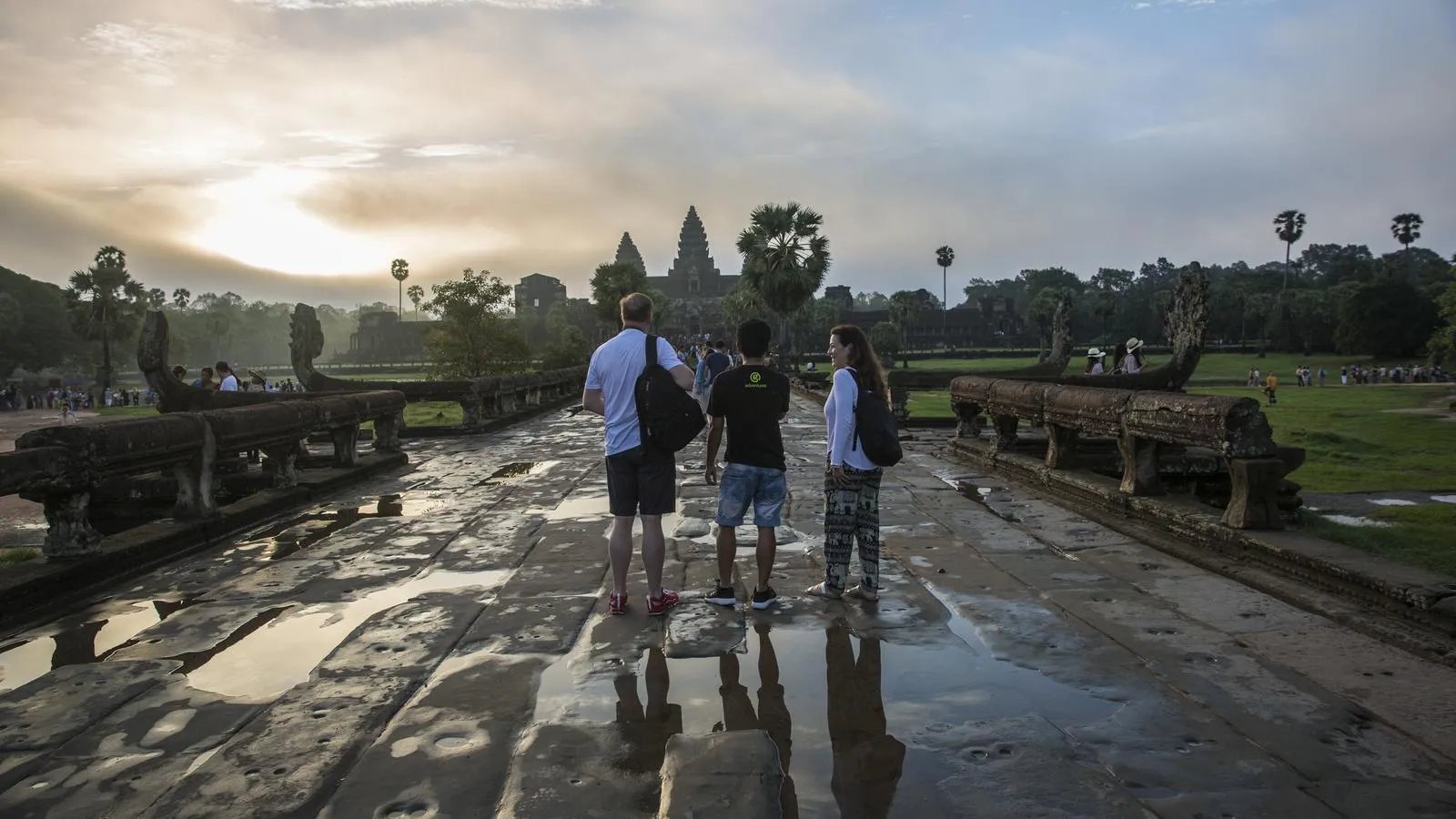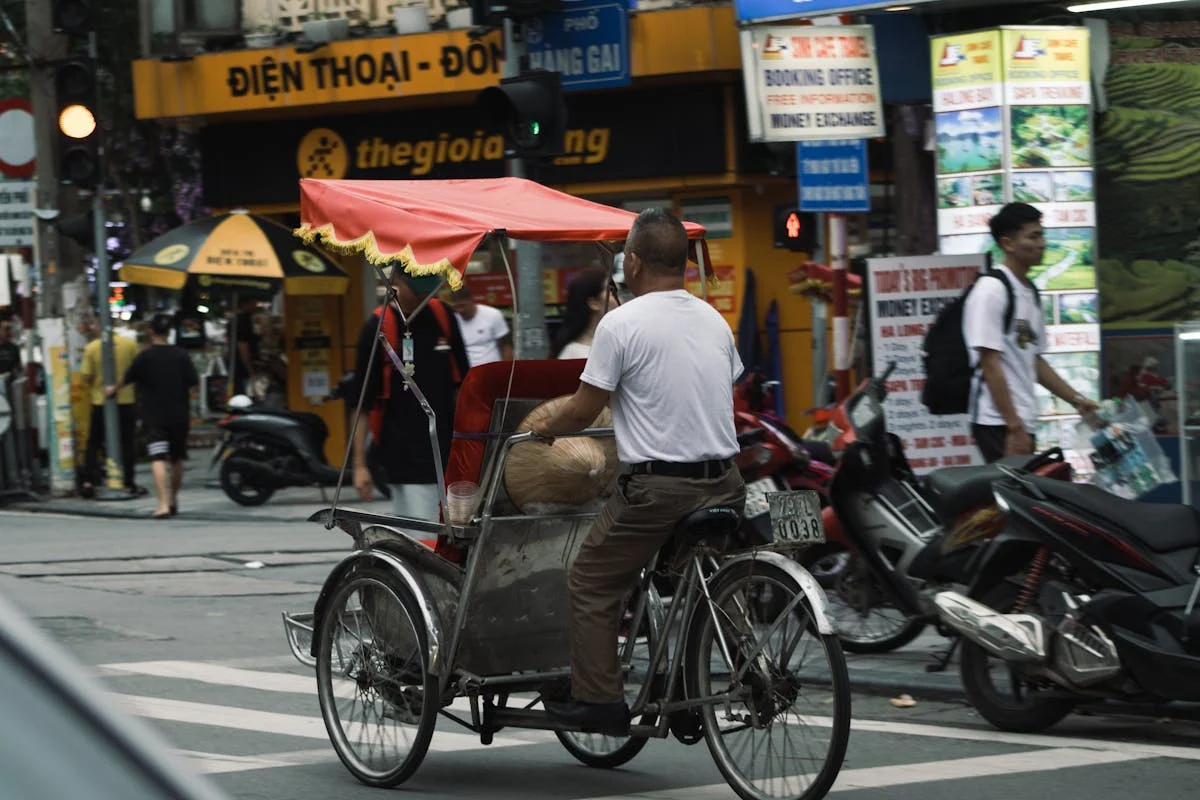Southeast Asia beckons with a tapestry of rich history, vibrant cultures, breathtaking landscapes, and tantalizing cuisine. Among its most captivating jewels are Vietnam and Cambodia, two nations linked by geography and history, yet distinct in their unique charm. Embarking on a Vietnam And Cambodia Tour offers an unparalleled journey, a chance to delve deep into ancient traditions, explore bustling modern cities, and witness nature’s grandeur, creating memories that linger long after you return home.
This isn’t just about ticking off famous landmarks; it’s about immersing yourself in the local rhythm. From navigating the chaotic yet charming streets of Hanoi to contemplating the solemn history of the Killing Fields in Cambodia, every moment is an experience designed to connect you with the soul of the region. Our goal is to guide you through this extraordinary adventure, highlighting the must-see sights, the hidden gems, and the cultural nuances that make this tour so special.
Experiencing the Heart of Vietnam: Hanoi and Beyond
Your Vietnam And Cambodia Tour often begins in Hanoi, the ancient capital of Vietnam. Hanoi is a city that vibrates with energy, a fascinating blend of French colonial architecture, ancient temples, and bustling street life. The Old Quarter is a labyrinth of narrow streets, each traditionally dedicated to a specific trade, where motorbikes weave past street vendors and tiny shops overflow with goods. Walking these streets is an assault on the senses – the smells of street food, the constant hum of traffic, the vibrant colours of goods on display.
Exploring the Hoan Kiem Lake area provides a serene escape from the city’s hustle. The Ngoc Son Temple, accessible via the iconic Huc Bridge (Bridge of the Rising Sun), sits peacefully on an island in the lake. This is a place where locals gather for morning exercises, couples stroll hand-in-hand, and the city feels slightly more subdued. Hanoi is also a cultural hub, home to fascinating museums like the Ethnology Museum and the Hoa Lo Prison Memorial, offering insights into Vietnam’s complex history and diverse ethnic groups.
 A small boat navigates the emerald waters of Halong Bay, surrounded by dramatic limestone karsts under a hazy sky, representative of a Vietnam And Cambodia Tour highlight
A small boat navigates the emerald waters of Halong Bay, surrounded by dramatic limestone karsts under a hazy sky, representative of a Vietnam And Cambodia Tour highlight
A highlight that features prominently in many tours is a journey to Halong Bay, a UNESCO World Heritage site. Cruising through the thousands of limestone karsts and islets rising dramatically from the emerald waters is an almost surreal experience. Overnight stays on traditional junks allow you to soak in the tranquility of the bay, kayak through hidden caves and lagoons, and enjoy freshly prepared seafood while watching the sunset paint the sky in hues of orange and purple. This natural wonder offers a stark contrast to the urban energy of Hanoi.
The Cuisine Journey on Your Vietnam And Cambodia Tour
No exploration of Vietnam is complete without diving headfirst into its legendary street food scene. Vietnamese cuisine is celebrated globally for its freshness, balance of flavours, and fragrant herbs. In Hanoi, you must try Pho, the iconic noodle soup, preferably from a small local stall. Bun Cha, grilled pork with vermicelli noodles and a dipping sauce, is another local specialty, famously enjoyed by former US President Obama.
Discover the Best – Where to Go on Vacation in Florida
Your Ultimate Guide – what to eat in destin florida
Discover Fun Things to Do in LA Today

Beyond the main dishes, explore delights like Nem Ran (spring rolls), Banh Mi (Vietnamese baguette sandwiches), and countless sweet treats and refreshing drinks. The food tells a story of the country’s history and regional diversity. From the savoury intensity of the North to the sweeter notes of the South, each region offers its own culinary identity, making the gastronomic journey a significant part of your Vietnam And Cambodia Tour.
Crossing the Border: The Wonders of Cambodia
As your Vietnam And Cambodia Tour continues, you’ll transition to the historical and spiritual heart of Cambodia, often beginning in Siem Reap. This town is the gateway to the magnificent Angkor Archaeological Park, home to the world-renowned Angkor Wat. Visiting Angkor Wat, especially at sunrise, is an awe-inspiring experience. The sheer scale and intricate carvings of this vast temple complex speak volumes about the power and artistry of the Khmer Empire.

Angkor Thom, with the enigmatic faces of the Bayon temple, and the crumbling ruins of Ta Prohm, intertwined with giant tree roots (famous from the movie Tomb Raider), are equally captivating. Exploring these temples feels like stepping back in time, wandering through the remnants of a once-mighty civilization. Guides provide essential context, explaining the history, mythology, and engineering marvels behind these incredible structures.
Beyond the grandeur of Angkor, Cambodia offers poignant historical sites. A visit to Phnom Penh, the capital city, includes the S21 Prison (Tuol Sleng Genocide Museum) and the Killing Fields of Choeung Ek. While confronting the tragic history of the Khmer Rouge regime is undoubtedly challenging, it provides crucial context for understanding modern Cambodia and appreciating the resilience of its people. These sites serve as a stark reminder of humanity’s capacity for cruelty but also highlight the nation’s journey towards healing and rebuilding.
Culture, History, and Local Life
Both Vietnam and Cambodia offer deep cultural insights. In Vietnam, you might encounter traditional water puppetry, explore vibrant markets, or visit local craft villages. The pace of life, particularly in rural areas or smaller towns like Hoi An (often included in longer tours), offers a glimpse into traditional Vietnamese life, from rice paddies to ancient trading ports.
In Cambodia, observing local life around Siem Reap or along the Mekong River reveals a different cultural fabric, influenced by Theravada Buddhism and ancient Khmer traditions. Monks in saffron robes are a common sight, and local markets buzz with activity. Engaging with local communities, perhaps through a cooking class or a visit to a village, enriches your understanding of their daily lives and traditions.
Planning Your Journey
A Vietnam And Cambodia Tour typically involves a mix of travel methods, including flights between major cities (like Hanoi, Ho Chi Minh City, Siem Reap, Phnom Penh), comfortable buses, boat trips (like the Mekong Delta and Halong Bay), and shorter local transport like cyclo-rickshaws or tuk-tuks. The “Standard” service level often means comfortable tourist-class accommodations with character, offering a good balance of comfort and local flavour.
While many activities are included, leaving time for independent exploration is key. This allows you to wander through markets at your own pace, discover hidden cafes, or simply sit and observe the fascinating street life unfold around you. Planning the best time to visit depends on the region, but generally, the dry season (roughly November to April) is popular, though can be crowded. The shoulder seasons offer a good balance of pleasant weather and fewer crowds.
Frequently Asked Questions About Vietnam And Cambodia Tours
What is the best time of year to take a Vietnam And Cambodia Tour?
The best time depends on the specific regions you visit. Generally, the dry season from November to April is popular, offering pleasant weather, especially in Southern Vietnam and Cambodia. Central Vietnam can experience rain during this period. The wet season (May to October) can bring occasional showers but also lush landscapes and fewer tourists.
What should I pack for a Vietnam And Cambodia Tour?
Pack light, comfortable clothing suitable for warm, humid weather. Include modest clothing (covering shoulders and knees) for visiting temples and religious sites. Essentials include comfortable walking shoes, insect repellent, sunscreen, a hat, a reusable water bottle, and rain gear during the wet season.
Is it safe to travel around Vietnam and Cambodia?
Both countries are generally safe for tourists. However, as with any travel, it’s wise to be aware of your surroundings, especially in busy areas, and take precautions against petty theft. Listen to the advice of your tour leader and locals.
What is the currency used in Vietnam and Cambodia?
Vietnam uses the Vietnamese Dong (VND). Cambodia uses the Cambodian Riel (KHR), but US Dollars (USD) are widely accepted, especially in tourist areas. It’s useful to carry smaller denominations of USD.
Do I need a visa for Vietnam and Cambodia?
Visa requirements vary based on your nationality. Many nationalities can obtain a visa on arrival or an e-visa for both countries, but it’s crucial to check the latest requirements well in advance of your trip. Your tour operator or embassy/consulate can provide the most up-to-date information.
Conclusion: An Unforgettable Journey Awaits
A Vietnam And Cambodia Tour is more than just a holiday; it’s an immersive experience that engages all your senses and leaves a lasting impact. From the ancient wonders of Angkor and the natural beauty of Halong Bay to the vibrant street life and poignant history, this journey offers a profound connection with Southeast Asia. Whether you’re a history buff, a food lover, a culture enthusiast, or simply seeking adventure, a tour through these captivating countries promises an unforgettable exploration of human resilience, rich traditions, and breathtaking beauty.
